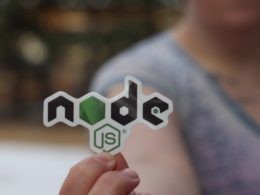Traditional recruitment processes remain burdened by inefficiencies — manual resume screening consumes time, unconscious bias affects fairness, and high application volumes overwhelm HR teams. As hiring becomes increasingly data-driven, artificial intelligence (AI) offers a strategic advantage. By automating screening, improving candidate-job matching, and reducing time-to-hire, AI is transforming how companies identify and engage top talent.
According to SelectSoftware Reviews, 75% of recruiters report that hiring processes take longer than expected. Moreover, with the average cost per hire exceeding $4,000, optimizing recruitment workflows has become a business priority. AI-powered tools address these challenges head-on, driving faster, fairer, and more cost-effective hiring outcomes.
How AI Enhances Resume Screening
AI tools drastically improve the resume screening process by replacing manual methods with intelligent automation:
- Automated Parsing: AI systems extract, organize, and standardize information from resumes and cover letters, enabling faster comparisons across candidates.
- Natural Language Processing (NLP): NLP algorithms interpret diverse phrasing and terminology, ensuring that relevant skills and qualifications aren’t overlooked due to wording differences.
- High-Volume Consistency: AI can evaluate thousands of applications with consistent criteria, ensuring no qualified candidate is missed due to human fatigue or oversight.
Intelligent Candidate Matching
Beyond scanning resumes, AI enables deeper insights into candidate-job alignment through:
- Skills-Based Matching: Rather than relying solely on keyword presence, AI evaluates contextual relevance and proficiency, identifying candidates with practical experience.
- Predictive Analytics: Machine learning models forecast a candidate’s likelihood of success and retention based on historical hiring and performance data.
- Cultural Fit Assessment: Some tools assess soft skills, values, and behavioral traits to recommend candidates aligned with organizational culture.
These capabilities are helping recruiters not only find qualified applicants but also identify those most likely to thrive in specific roles.
Accelerating Time-to-Hire
Time-to-hire remains a critical metric for talent acquisition teams. AI expedites the recruitment pipeline without sacrificing quality:
- Automated Shortlisting: AI identifies top candidates in a matter of hours, reducing early-stage screening time.
- Smart Scheduling: Integration with calendars and communication platforms enables seamless interview coordination.
- Real-Time Insights: Dashboards and analytics tools help recruiters monitor bottlenecks and adjust strategies on the fly.
Companies like Unilever experienced a significant reduction in hiring time after introducing AI tools such as HireVue, which automate early-stage candidate evaluations.
Minimizing Bias and Improving Fairness
AI can help counteract unconscious bias in recruitment — but only when implemented responsibly:
- Blind Screening: By removing identifiers like name, age, or address, AI enables objective assessments based on qualifications alone.
- Inclusive Language Analysis: Some platforms scan job descriptions for biased language, helping companies attract more diverse talent.
- Bias Monitoring: Algorithms can be audited to detect discriminatory patterns, ensuring fairness is maintained over time.
That said, AI can also perpetuate bias if trained on flawed data. A well-known case involved Amazon scrapping its AI resume screener after discovering it penalized resumes containing the word “women’s”— highlighting the importance of oversight.
Ethical Considerations and Implementation Challenges
While the benefits of AI recruitment are significant, ethical and operational risks must be addressed:
- Transparency: Candidates should understand how AI is used in evaluation to build trust and reduce perceptions of unfairness.
- Human-in-the-Loop Design: AI should augment — not replace — recruiters, combining efficiency with human judgment for more nuanced decisions. For instance, in investment banking recruitment, AI can efficiently screen for technical competencies, while human recruiters assess cultural fit, negotiation acumen, and leverage industry connections — factors that often lie beyond the reach of algorithmic analysis.
- Data Privacy Compliance: Recruitment systems must meet data protection standards such as GDPR and CCPA, with clear protocols for storage and consent.
Measuring Impact and ROI
Organizations leveraging AI in hiring report measurable gains:
- Reduced Time-to-Hire: 86.1% of recruiters using AI report faster hiring processes
- Cost Efficiency: AI-driven recruitment can reduce hiring costs, primarily through automation and reduced manual workload
- Improved Retention: AI-matched hires tend to stay with the company longer, supporting better long-term fit.
Looking Ahead: The Future of AI in Talent Acquisition
Emerging trends will push AI recruitment even further:
- Conversational AI: Chatbots are conducting early-stage interviews and answering candidate queries in real time.
- Talent Pool Nurturing: AI helps maintain engagement with passive candidates through personalized outreach and content.
- Integrated Talent Platforms: Future systems will connect AI recruitment tools with onboarding, training, and performance management for a seamless talent lifecycle.
Conclusion
AI is reshaping recruitment from a reactive process into a strategic advantage. However, success requires more than software adoption — it demands ethical implementation, ongoing oversight, and integration with human insight. Organizations that strike the right balance between automation and empathy will gain a true edge in attracting and retaining top talent.
HR leaders should begin by auditing their current hiring workflows, identifying areas where AI can relieve bottlenecks, reduce bias, and enhance decision-making.












